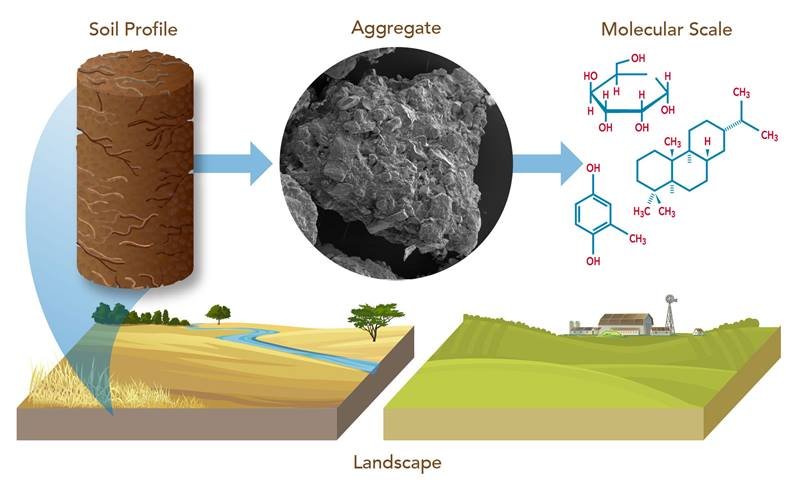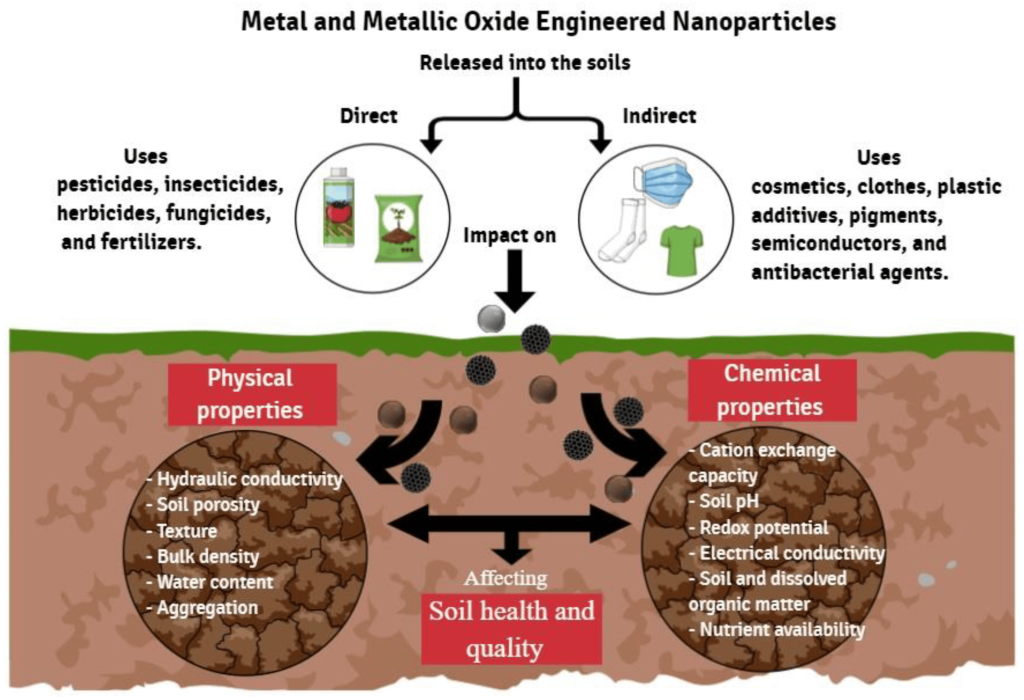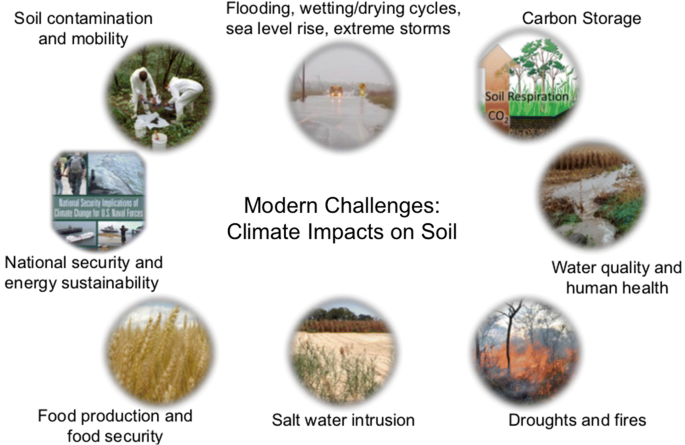Under our feet is a complex and vibrant world full of life, where the chemistry of the soil creates a symphony of interactions necessary to support terrestrial ecosystems. Frequently disregarded yet essential to life as we know it, soil functions as a dynamic matrix in which chemical processes determine the availability of nutrients, the fate of pollutants, and the resilience of ecosystems. We dive into the depths of soil chemistry in this thorough investigation, revealing its complexities and highlighting its importance in promoting environmental quality, agricultural productivity, and global sustainability.

Knowing Soil Chemistry
The study of chemical reactions that take place in the soil matrix, including those involving water, minerals, organic matter, and microbes, is known as soil chemistry. Important ideas guiding the chemistry of the soil include:
The composition of the soil
Each component of soil—mineral particles, organic matter, water, and air—plays a different role in the chemistry of the soil. Sand, silt, and clay are examples of mineral components that affect soil texture, water retention, and nutrient availability. Decomposed plant and animal waste produces organic matter, which gives soil microorganisms a source of nutrients and energy and improves soil fertility and structure.
Acidity and Soil pH
Soil pH, which is a gauge of acidity or alkalinity, has a significant impact on plant development, microbial activity, and nutrient availability. Alkaline soils (pH > 7) can result in nutrient imbalances and toxicities, while acidic soils (pH < 7) typically restrict the availability of vital elements including phosphorus, calcium, and magnesium. A thorough understanding of soil pH dynamics is necessary to maximize crop productivity and soil fertility.
Cycling of Nutrients
In the soil-plant system, the chemistry of the soil controls the cycling of vital nutrients such as micronutrients, phosphorus, potassium, and nitrogen. Nutrient availability to plants is regulated, leaching and volatilization are minimized, and organic and inorganic forms of nutrients are transformed by microbially mediated processes such as mineralization, nitrification, and denitrification.
Contaminants in Soil
The fate and behavior of contaminants including pesticides, heavy metals, and industrial pollutants are also influenced by the chemistry of the soil. The adsorption, desorption, and degradation of pollutants can be influenced by soil parameters, including pH, organic matter concentration, and mineral composition. These variables can modulate the bioavailability and environmental impact of contaminants. Determining the dangers to human health and ecosystem integrity requires an understanding of the mechanisms behind the interactions between contaminants and soil.

The Use of Chemistry in Soil Management
Practical applications of soil chemistry principles can be found in land remediation, agriculture, and ecosystem restoration, among other areas of soil management. Among the major domains in which the chemistry of the soil is essential are:
Fertility Management of Soils
A thorough understanding of soil chemistry, including nutrient availability, pH control, and organic matter dynamics, is necessary to optimize soil fertility. To guide the creation of fertilizer recommendations and soil amendment techniques to increase crop yield sustainably, soil testing and analysis are used to assist in identifying nutrient deficits and imbalances.
Remediation of Soil
Strategies for cleaning up contaminated areas, like brownfields and industrial wastelands, are influenced by the chemistry of the soil. Utilizing the chemistry of the soil principles, methods including chemical stabilization, phytoremediation, and soil washing reduce environmental effects while reducing pollutant risks, restoring soil health, and facilitating land reuse.
Conservation of Soil
The productivity of agriculture and the sustainability of the environment are seriously threatened by soil erosion, deterioration, and loss. Because it clarifies the processes controlling soil structure, aggregation, and stability, soil chemistry is essential to initiatives aimed at conserving soil. Utilizing the chemistry of the soil principles, techniques like cover crops, conservation tillage, and organic amendments improve soil resilience and reduce erosion hazards.
Mitigation of Climate Change
Initiatives to mitigate climate change and the chemistry of the soil interact through nutrient management and soil carbon sequestration, for example. In addition to fostering soil health and ecosystem resilience, increasing the amount of organic matter in the soil, maximizing nitrogen usage efficiency, and reducing greenhouse gas emissions from soils all help to mitigate the effects of climate change.
Explore More Water Chemistry: Investigating the Properties of H2O

Problems and Future Directions
Despite tremendous progress, there are still problems with comprehending and controlling soil chemistry, which calls for more study and creativity. Future directions and major issues in the chemistry of the soil include the following:
Impacts of Climate Change
Temperature regimes, precipitation patterns, and biogeochemical cycles are all affected significantly by climate change, which also has an impact on soil chemistry. To reduce climate-related hazards and improve soil resilience, adaptive methods that take into account how soil processes, nutrient dynamics, and pollutant fate are impacted by climate change must be developed.
Plant-Soil-Microbe Interactions
Complex interactions between the chemistry of the soil plant physiology and microbial ecology affect the cycling of nutrients, the health of plants, and the operation of ecosystems. Through multidisciplinary study methods, we may better understand the connections between soil, plants, and microbes, which will improve our capacity to optimize soil management strategies and stably increase agricultural productivity.
Developing Pollutants
The advent of new pollutants including nanomaterials, microplastics, and medicines creates new problems for environmental quality and soil chemistry. To create practical mitigation plans, interdisciplinary approaches integrating environmental engineering, toxicology, and chemistry are needed to investigate the fate, transport, and toxicity of developing pollutants in soils.
In summary
The foundation of terrestrial ecosystems is soil chemistry, which determines the resilience of the ecosystem, the destiny of pollutants, and the cycling of nutrients. We can better understand the dynamic interactions that control soil health, agricultural productivity, and environmental quality by solving the mysteries surrounding the chemistry of the soil. For future generations, efforts to promote sustainable land management and global resilience will be guided by the concepts of the chemistry of the soil, as we tackle the pressing issues of feeding an expanding population, reducing environmental pollution, and adjusting to a changing climate.










